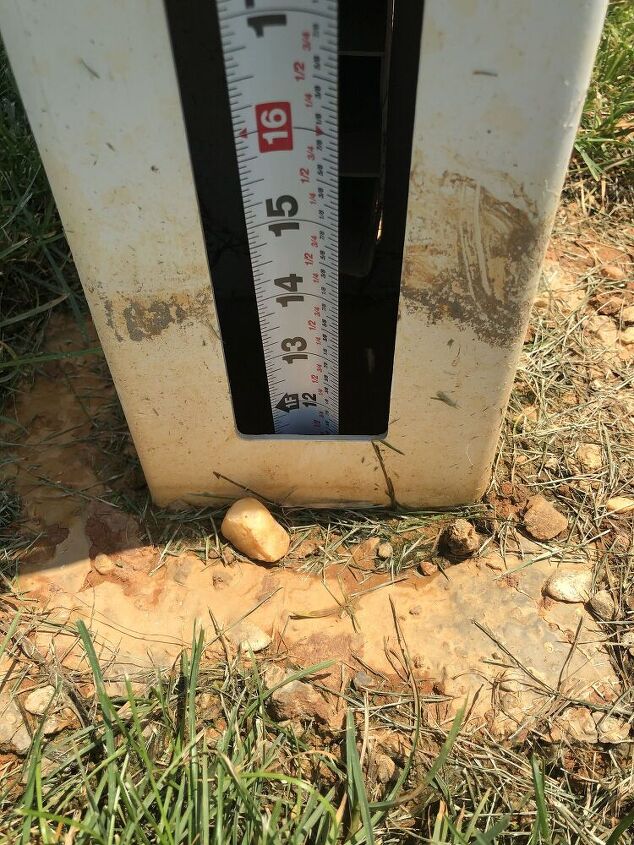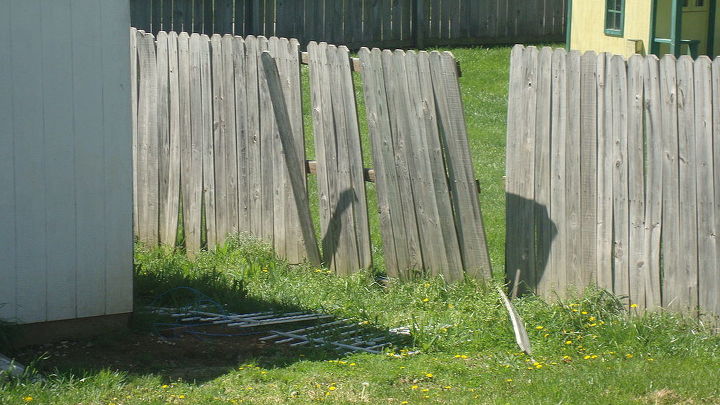Fence post installation issue
I'll try to keep this short. I recently had a privacy fence installed by the builders of my house and I do not feel that they've done a good job. I think they were lazy and didn't dig a deep enough hole and then just poured a couple of bags of concrete on top and are hoping they can get away with it.
The thing is, it's pretty hard to tell if they dug deep enough without, you know, digging up the entire post. Luckily, since they only installed one section of fence, the end post is still "open" so that I can finish the job myself once the materials come in. So I grabbed a tape measure and stuck it down the opening to see how far I could go.
As you can see in the picture, I can only get the tape measure down 12 inches before I hit dirt. Is this an accurate way to measure how deep the post is buried?? Like, could the post itself still go deeper since it is hollow?
The frost line in my area is 30 inches. There's no way this is done correctly, right?
Related Discussions
GNATS - How to get rid of them?
Somehow my house and garden got tiny gnats that killed my fuchsia plant and fly everywhere. I have tried ALL the Web recommendations - soap and oil dishes, sand in th... See more
Marigolds growing! Should I pinch the buds?
My marigold plants are growing. I heard that pinching the buds until Autumn will allow them to grow without killing the plant. Is this true?
Growing garlic
Growing our first garlic, should we wait until the leaves are drying out before we pick it? Husband picked first one today along with our first potatoes.
How to keep mice out of your garden?
Hi everyone, I have mice in my garden destroying my vegetables and I have also noticed them in the barn and shed. Please can someone tell me how to prevent them from ... See more
What's the best flower/plant to grow in Texas?
I know that opinions vary, but what's your opinion?!I have great luck w Rosemary plants. Green all year long.
Best way to kill bush/tree after being cut down?
Just moved into a new home. There was a huge thorny bush dragon devouring the mailbox. I slayed the dragon but it is trying to rise up again. How can I make sure it's... See more
Nightmare neighbors
We have the worst neighbors ever! They complain about everything! They hate dogs so they complain every time our dogs bark one time (not exaggerating) they have fabri... See more







if your frost line is 30 in they should have dug it 30 inches
Here's a rule of thumb guide to help you:
Here are a four tips to help you find the correct fence post hole depth:
You'll have to do a little research for your area to figure out where the frost line is. That will help you in making your decision on whether or not they need to redo it. Being quality contractores, they should have all the facts before they start and finish the project.
ref: https://www.outdooressentialproducts.com/en/Projects/How-deep-to-dig-fence-post-holes
I think the only way to see how deep they went is to dig down on one side of it.
How high is your post now? The frost line has little to do with how far down your post is. While the post hole should be below the frost line and filled with a drainable material, the actual post is probably following the 1/3 rule. Find out from the builder what the original height of the post was and if they were cut shorter. The bottom of the post may have been open to begin with, and the opening in your picture is designed to be filled with concrete or dirt. All of the posts might not be done the way the one in the picture is. It's possible they just forgot to finish filling it. Definitely talk to the builder and see what they have to say. You could take a 3 foot length of rebar and bang it down until you hit concrete and see how far down the concrete is.
I would assume the post is deep enough. You may be hitting the concrete or the dirt. The hole (slot) you took the measurement is where the bottom fence rail snaps in. The concrete is not only on the surface it's in the post hole holding the post. The manufacturer of the fence allows for proper length of the post for frost lines. The only possibility is instead of digging down to the frost line they cut the post short so as not having to dig as deep as needed. That would be laziness on their part and may void the fence warranty. I would question them on what they did and if it was done properly. Write any notations on the contract and bill of sale.
You can measure the post and calculate how dee they are buried but they could have cut them. Not sure what the frost line has to do with the depth. It is based on high they are above ground and material. For example, t posts only go a few inches but 6’ above ground wood should be 2-1/2’ buried.
Agreed on the rebar trick, and call your insurance company as well. IF there's an issue in the future, you want someone on your side. Here in Missouri we get enough wind to take down a poorly installed fence here and there.
Having lived in NWT, I believe the post should be below the permafrost level. Where do you live? if there is a town nearby that has a public works dept., I would ask them or an old-timer. We used to do our horse fencing 6' down. https://www.outdooressentialproducts.com/en/Projects/How-deep-to-dig-fence-post-holes
The post needs to go down about 18 inches then cement footer should be installed and the post set in it
It sounds like they may have gone deeper than what you are showing on the tape. Normally 10" to 14" is good as long as they have put concrete around the base. That's why I like to be home when they are pouring concrete.
I did my back section of my fence and have done a few before. I think you are fine as long as they put concrete down around each post.
If you really want to check to see, you can get a drill and a bit that can reach the depth that will satisfy you. Drill about 6" out and angle the bit as if you are aiming at the bottom of the post.
You should hit concrete, if so stop. Pull the bit out and check the depth. Four small holes , one on each side should confirm your depth of concrete.
Fill your small holes with soil to avoid water from collecting on your concrete base, if you are satisfied with the results.